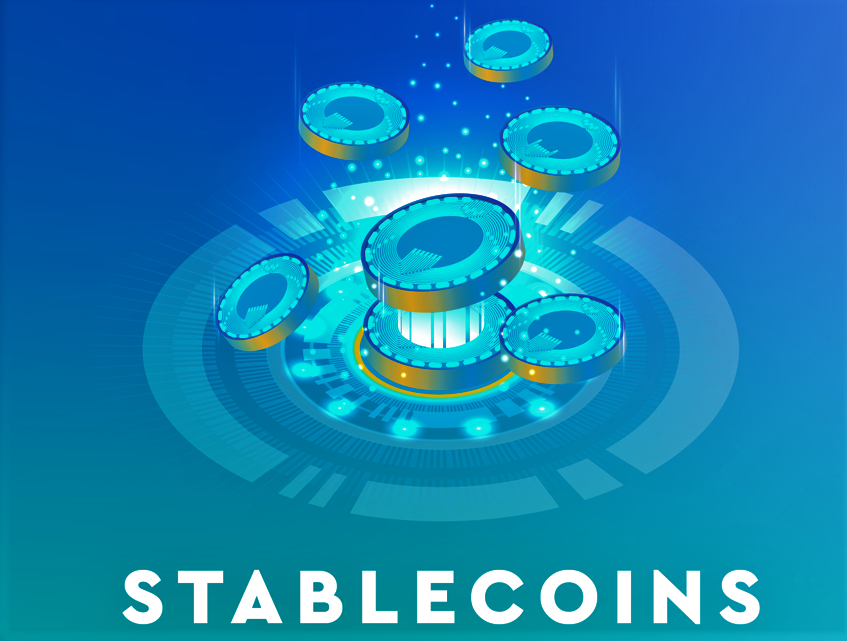
StaleCoin
Stablecoins are a type of cryptocurrency designed to remain stable over time, based on the value of the underlying asset, such as the US dollar. They aim to deliver all the benefits of crypto while trying to avoid the rush. Crypto market capitalization can rise and fall by billions of dollars every day. Even the main cryptocurrency – Bitcoin (BTC) – is subject to great changes in value. Over the past month, investors have seen daily fluctuations of around 4% in the value of BTC.
Fiat currencies, such as the US dollar or the British pound, do not receive this price limit. So another way to think about stablecoins is as a token of fiat money. In theory, a US dollar-based stablecoin is a token that will live on the blockchain and trade regularly for one dollar.
History of Stablecoins
Cryptocurrencies, known for their technology-based and flexible nature, were first introduced to the world in 2008 when Satoshi Nakamoto published the Bitcoin white paper. Since then, various enthusiasts, computer scientists, and entrepreneurs have developed blockchain technology that powers the Bitcoin network for many different purposes in terms of assets, networks, and protocols. others.
These blockchain systems together with tokens (commonly called cryptocurrencies) are part of the blockchain network’s incentive system to create a network effect. Over time, markets have been created for these currencies, allowing market participants to express their opinions by buying and selling these cryptocurrencies.
As the crypto industry is in its infancy, the cost of these digital assets is low, leading to high volatility. This poses a problem for wider adoption, since frequent movements and material costs limit its use cases.

Stablecoins generally work the same way across the board: they are cryptocurrencies embedded in the blockchain that users can buy, sell and trade on exchanges like any other cryptocurrency. People can store stablecoins in their wallets and/or cold storage devices just like they would bitcoins or any altcoin. In order to achieve integrity, many statscoins are linked to a store of external assets, whether it is a fiat currency, a commodity like gold, or a debt instrument like a commercial paper. . In most cases, a company or company developing a stablecoin has a capital equal to the amount of stablecoins it distributes. This means that any Stablecoin holder will be able to exchange Stablecoin tokens for dollars at any time.
Types of Stablecoins
Stablecoin backed by Fiat
A fiat-backed stablecoin is a cryptocurrency built on the value of fiat currency held by financial institutions held by third parties. The cost of maintaining the stability of stablecoins is equal to maintaining a pool of support. Among the 4 types of stablecoins, fiat is the best fiduciary contract for stablecoins
Stablecoins support commodities:
Commodity-backed stablecoins are cryptocurrencies that are tied to the value of a valuable asset such as gold or silver. These coin prices are tied to one or more commodities and can be redeemed on demand. In addition, the number of commodities used to buy stablecoins should reflect the cryptocurrency’s distribution.
Crypto stablecoins:
Similar to fiat-backed stablecoins, crypto stablecoins use other digital currencies as collateral. However, the difference between these two concepts is that fiat contracts appear on the blockchain while crypto is built supported on the blockchain, using smart contracts.
In addition, the importation of crypto stablecoins is regulated in chains and smart contracts. Also, the price stability of these assets can be killed with the participation of other instruments and incentives, not only crypto contracts.
Algorithm stablecoins:
Among the 4 types of stablecoins, algorithmic stablecoin is the only one that does not depend on any contract. Rather, their price stability is the result of smart contracts and unique algorithms. The algorithm will reduce the distribution of tokens when the market price falls below the price of the following fiat currency. On the other hand, when the price of the crypto rises above the tracking fiat price, a new token will be added to reduce the price of the stablecoin.
Maintain stability
The next change in cryptocurrency may be important. Not marketing properly can have a serious impact on your sales, costing you thousands of dollars if not done right. Investors will want to look at the market carefully. If an investor cannot maintain this supervision, sticking to stablecoins can make it easier to make money. Stablecoins also protect investments in “bearish” events, during which cryptocurrencies fell sharply.
Can be programmed
Stablecoins are essentially cryptocurrency, bringing flexibility to corporate investment. A company can modify and rebrand steecoin to meet customer needs. For example, Walmart has shown an upcoming stablecoin with an integrated loyalty program. This hybrid will combine all loyalty rewards and money into one app. With the introduction of Stablecoin, loyalty programs become a customer-friendly process (via apps), resulting in a saturated loyalty market.
Fast speed
Escrow accounts manage financial transactions related to stablecoins. Banks and deposits in stablecoins bring transactions at all hours of the day. Blockchain works independently of any central company (and their opening hours), bringing freedom and coordination.
Debt reduction
Currently, credit card processing earns a 2% commission on each transaction. This fee is paid for many small businesses, which prevents the use of large lenders and high prices. However, Stablecoins offer the same benefits of credit transactions without the high costs involved.
understanding
All transactions on the blockchain are visible to the blockchain auditor. This system is supported by a frequent audit process, providing security and access to stablecoin services.

